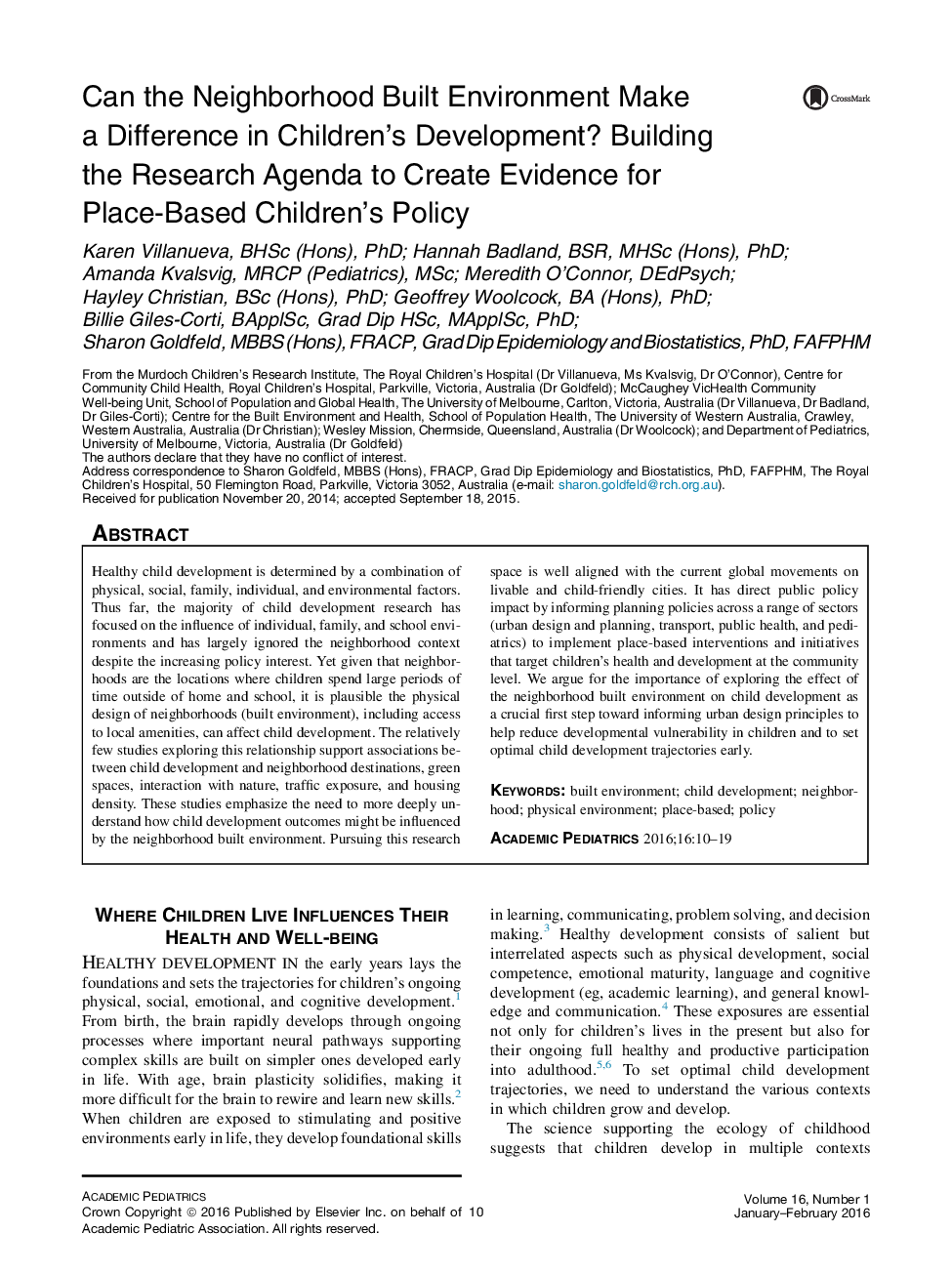| کد مقاله | کد نشریه | سال انتشار | مقاله انگلیسی | نسخه تمام متن |
|---|---|---|---|---|
| 4138977 | 1272189 | 2016 | 10 صفحه PDF | دانلود رایگان |
Healthy child development is determined by a combination of physical, social, family, individual, and environmental factors. Thus far, the majority of child development research has focused on the influence of individual, family, and school environments and has largely ignored the neighborhood context despite the increasing policy interest. Yet given that neighborhoods are the locations where children spend large periods of time outside of home and school, it is plausible the physical design of neighborhoods (built environment), including access to local amenities, can affect child development. The relatively few studies exploring this relationship support associations between child development and neighborhood destinations, green spaces, interaction with nature, traffic exposure, and housing density. These studies emphasize the need to more deeply understand how child development outcomes might be influenced by the neighborhood built environment. Pursuing this research space is well aligned with the current global movements on livable and child-friendly cities. It has direct public policy impact by informing planning policies across a range of sectors (urban design and planning, transport, public health, and pediatrics) to implement place-based interventions and initiatives that target children's health and development at the community level. We argue for the importance of exploring the effect of the neighborhood built environment on child development as a crucial first step toward informing urban design principles to help reduce developmental vulnerability in children and to set optimal child development trajectories early.
Journal: Academic Pediatrics - Volume 16, Issue 1, January–February 2016, Pages 10–19
